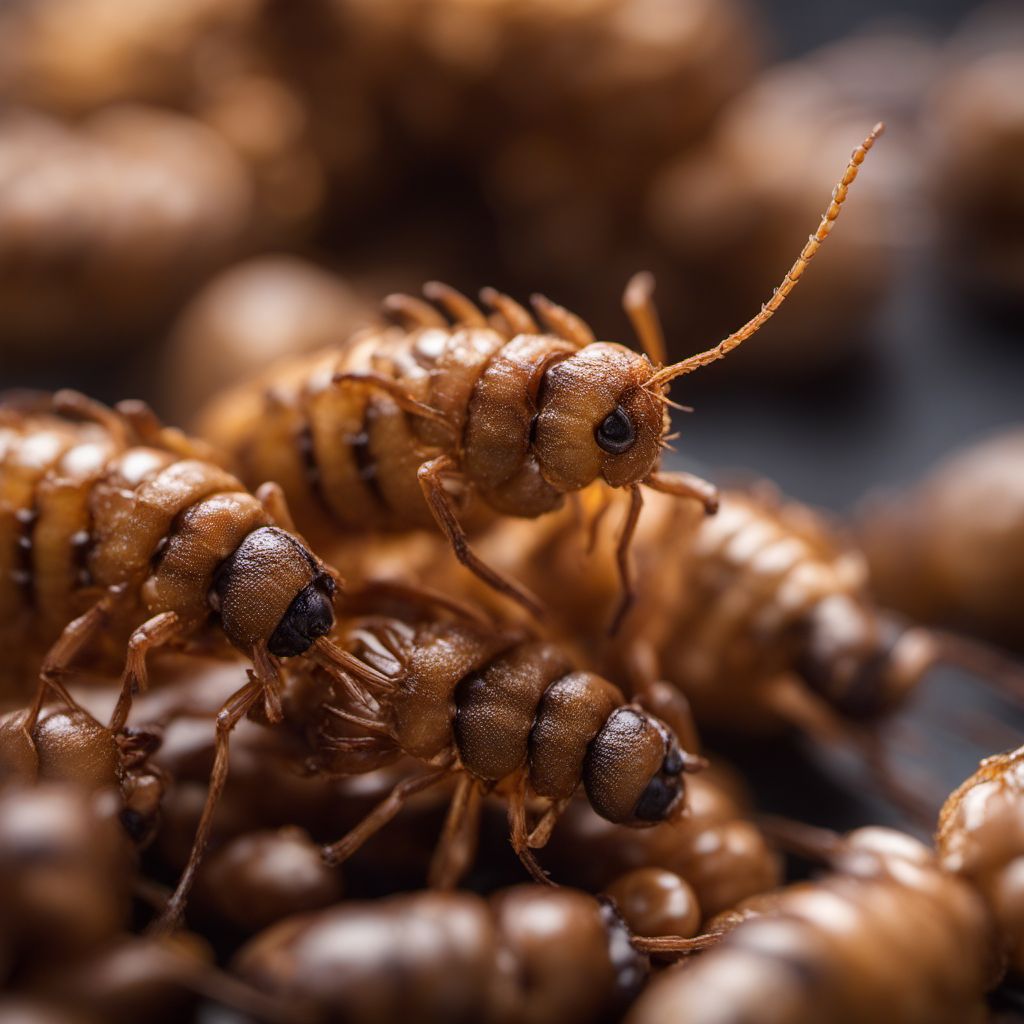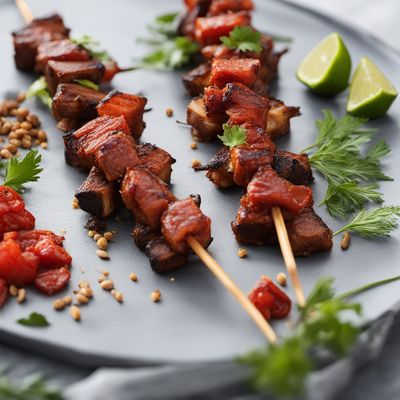
Ingredient
Edible insect pupae/nymphs
Delicious Insect Delicacy
Edible insect pupae/nymphs are small, soft-bodied creatures that undergo metamorphosis before reaching adulthood. They have a mild, nutty flavor and a tender texture, making them suitable for various cooking methods such as frying, sautéing, or incorporating into baked goods. These tiny morsels are often used as a protein-rich ingredient in dishes like stir-fries, tacos, or even as a crunchy topping for salads.
Origins and history
Edible insect consumption has a long history in many cultures, dating back thousands of years. Insects have been a traditional food source in regions such as Africa, Asia, and Latin America, where they are considered a valuable protein source. In recent years, the Western world has also started embracing edible insects as a sustainable and nutritious alternative to conventional meat.
Nutritional information
Edible insect pupae/nymphs are rich in protein, vitamins, and minerals. They are particularly high in iron, calcium, and B vitamins, making them a nutrient-dense ingredient. Additionally, they are low in fat and carbohydrates, making them suitable for various dietary preferences.
Allergens
May contain allergens such as shellfish or crustaceans. Individuals with shellfish allergies should exercise caution when consuming edible insect pupae/nymphs.
How to select
When selecting edible insect pupae/nymphs, look for specimens that are plump, firm, and free from discoloration or signs of spoilage. Avoid any with a strong odor or visible signs of mold. If purchasing from a reputable supplier, ensure that the insects are sourced from reliable and safe sources.
Storage recommendations
To maintain the freshness and quality of edible insect pupae/nymphs, store them in a cool, dry place away from direct sunlight. If purchased in sealed packaging, follow the instructions provided. Once opened, transfer any remaining insects to an airtight container or resealable bag and store in the refrigerator for up to a week.
How to produce
Edible insect pupae/nymphs can be produced at home by setting up a controlled environment that mimics their natural habitat. This can involve creating a suitable temperature, humidity, and feeding conditions for the insects to thrive. However, it is recommended to consult with experts or reputable sources for detailed guidance on the specific species being cultivated.
Preparation tips
Before using edible insect pupae/nymphs, it is essential to clean them thoroughly by rinsing them under cold water. They can be cooked in various ways, such as sautéing with spices and herbs, deep-frying for a crispy texture, or incorporating into baked goods like cookies or protein bars. Experiment with different recipes and cooking techniques to explore the versatility of this unique ingredient.
Culinary uses
Edible insect pupae/nymphs are commonly used in savory dishes such as stir-fries, soups, or tacos. They can also be ground into a powder and used as a protein-rich ingredient in baked goods or energy bars. Additionally, they can be used as a crunchy topping for salads or incorporated into dips and spreads for added texture and flavor.
Availability
Edible insect pupae/nymphs are available in various regions around the world, including Africa, Asia, Latin America, and some Western countries. However, their availability may vary depending on cultural acceptance and local regulations regarding edible insects.

